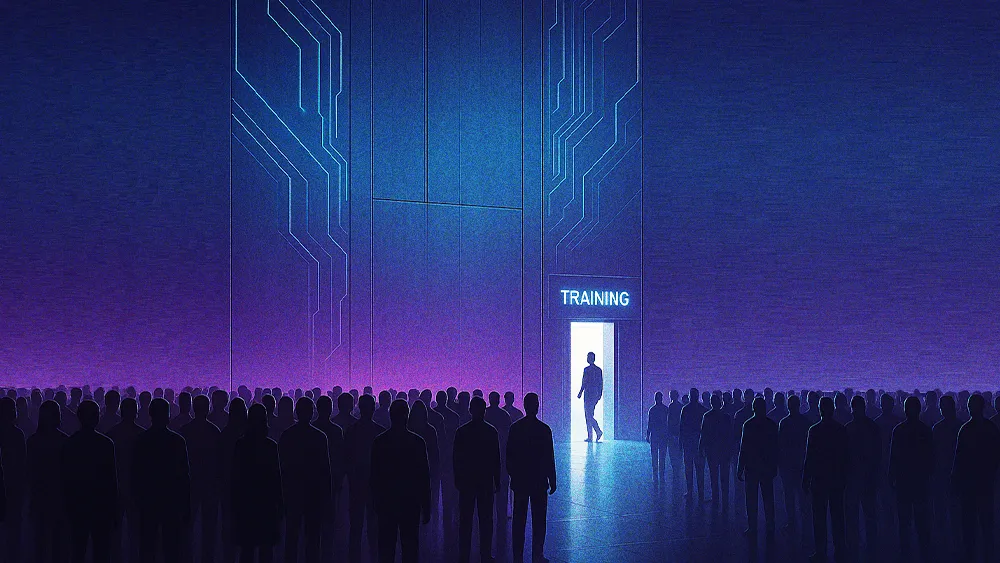
All articles
Informatica Product VP on the Leap to Multi-Agent Orchestration and Why It's '90% Plumbing'
Sumeet Agrawal, VP of Product Management at Informatica, explains why enterprise AI projects fail when leaders focus on the agent instead of the infrastructure.

Key Points
Enterprise AI projects fail because leaders focus on the agent instead of the foundational “plumbing” that makes up 90% of the work.
Sumeet Agrawal, the VP of Product Management for Agentic AI & iPaaS at Informatica, explains why this plumbing involves orchestrating multiple agents, governing access, and ensuring data is trustworthy.
His advice to business leaders is to find a valuable use case, build the data foundation first, and treat the agent as the final step.
An agent is only as good as the data it has, and in a multi-agent system, that problem gets much harder. The primary challenge is ensuring that all agents use high-quality, trusted data and that context is shared correctly among them. That continuous sharing of knowledge is where we see people face the most difficulty.

Most leaders are learning a difficult lesson on the path to agentic AI: building agents is the easy part. The real challenge is creating an enterprise-grade foundation that can support multi-agent orchestration, trusted data, and rigorous governance, all at once. Now, some experts say a failure to build this foundation is one of the primary reasons 95% of organizations see no return on their GenAI investments. The result is a world in which many companies invest in AI, but few have successfully deployed it at scale.
To understand why the foundational work is so critical, we spoke with Sumeet Agrawal, Vice President of Product Management for Agentic AI & iPaaS at data management company Informatica. From his early days as a software engineer at Microsoft to his current role, Agrawal's career traces the evolution of data technology itself. As the person who first proposed many of the company's big data and MLOps initiatives, Agrawal offers a unique perspective on what it takes to turn a promising idea into a scalable, enterprise-grade reality. For most organizations, he says, the first major hurdle is the leap from single-agent systems to multi-agent orchestration.
"An agent is only as good as the data it has, and in a multi-agent system, that problem gets much harder. The primary challenge is ensuring that all agents use high-quality, trusted data and that context is shared correctly among them. That continuous sharing of knowledge is where we see people face the most difficulty," Agrawal says.
A chain of command: It also requires a new way of thinking about permissions, he explains. "In a multi-agent system, one agent can call another, which can call another, and each one has its own set of tools. The challenge is figuring out how to pass the user's context through that entire chain. You have to ensure a user is only allowed to access specific tools and agents, and then make sure that context is shared correctly back to the main 'planner' agent. Managing security and access across that hierarchy is a major problem."
To make the foundational "plumbing" tangible, Agrawal outlines a clear, four-layer blueprint for an enterprise-grade agentic stack. Any general-purpose reasoning model is insufficient on its own, he explains. It requires a Retrieval-Augmented Generation (RAG) layer to provide relevant enterprise context. But if poor-quality data is fed into the RAG system, the model’s outputs will be flawed, he cautions.
On top of this sits the tools layer, where agents get their power to act. Without proper access controls, however, organizations risk creating a "nightmare" scenario, according to Agrawal. When any user can invoke any tool, it opens significant security holes, he explains. To prevent vulnerabilities, the entire stack must be wrapped in a comprehensive governance protocol, he continues. A full SDLC for the agent must include evaluation frameworks to detect hallucinations and track behavior over time to make sure it actually solves the end customer's use case.
Chasing the shiny and new: For executives, Agrawal's first piece of advice is to ignore the hype. "Don't go with the shiny next LLM," he says. Instead, true readiness comes not from adopting the newest model but from taking an "outcome-based approach" that starts with identifying the right business problem to solve.
Democratizing agent building can leverage skills across an organization. But Agrawal also acknowledges a new risk: "agent sprawl." Here, a proliferation of redundant, ungoverned tools creates new silos and tech debt. Instead, he advises a structured approach that balances democratization with centralized oversight.
A marketplace of ideas: To prevent the inevitable outcome where "everybody is building an agent, but nobody knows what everyone else has," he proposes a centralized discovery layer. "I firmly believe in creating a central marketplace for agents. It should be a place where all enterprise agents are published and discoverable. Before anyone starts building a new agent, they should be able to go to the marketplace and see if something similar already exists that they can use or adapt."
Blueprints, not chaos: The marketplace model establishes a clear relationship between the "builder persona" of central IT and the "consumer persona" of business teams, Agrawal explains. "A central IT team should be responsible for building this marketplace and providing a set of governed ‘blueprints’ for common agents and functions. The business teams can then leverage these blueprints as a starting point, modify them for their specific needs, and ideally, contribute their improvements back to the marketplace for others to use."
Ultimately, Agrawal calls for disciplined execution. For him, success depends on orchestrating trusted data, securing tools, and governing agent behavior. Often, the intense focus on the agent itself obscures the foundational infrastructure just beneath the surface, he explains. "Think of it like an iceberg. Building the agent is the 10% you see above the water. The other 90%, the massive layer hidden underneath, is the plumbing. That's the hard part. The plumbing is your data infrastructure, your security, your governance, and your integration. That’s where the real investment needs to be."
For executives wondering where to start, Agrawal offers a simple, three-step mantra in conclusion: "First, find the right use case that will deliver a clear return on your investment. Once you have that, invest your time in building the right data-backed foundation. Only then should you think about building the agent itself."





